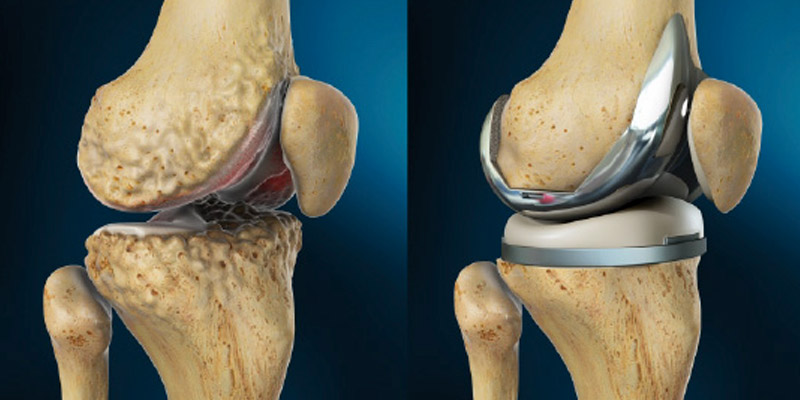
Facts About Total Knee Replacement You Must Know
03 JulTotal knee replacement is a surgical procedure wherein the damaged or infected knee joint is replaced with an artificial material made of plastic or metal. Generally, during a total knee replacement, the lower end of the thigh bone is removed and replaced with a metal shell, and the upper end of the lower leg bone is removed and replaced with a plastic piece. These artificial components used in a total knee replacement surgery are called prosthesis.
What types of prostheses are used?
Majorly, all prosthesis parts are made from a combination of metal and plastic. However, depending upon the surgeon’s preferences and patient’s condition, prostheses that are all metal, all ceramic, or ceramic and plastic can be used. Although there have been many studies trying to prove one type of prostheses to be better than the other, there has been no definitive scientific evidence for the same. But yes, how the prostheses are fixed to the bone is of importance. Two different types of fixations include – 1. Attachment with bone cement; and 2. Cementless. Both these types of fixations have their own advantages. Using bone cement for the surgery is beneficial as a small amount of antibiotic can be added to it to help decrease the risk of post-surgical infection. Also, the bone cement dries within a few minutes, thus making the surgeon and patient confident that the prosthesis is firmly in place. On the other hand, cementless procedures offer a comparatively long-term bond between the prostheses and bones, along with eliminating worry about the degradation and breakdown of bone cement. However, cementless procedures take up to 3 months to completely have the bone grow. You can speak to your surgeon and ask for advice as to which kind of procedure is best suited to your condition. And, if you opt for bone cemented procedure, make sure you choose Palacos bone cement for arthroplasty in Bangalore from Aditi Corporation, a reputed name in the industry for supplying the best quality materials for joint replacements.
Special knee replacement surgeries
Patients with severe damage done to the knee joint, resulting in progressive pain or impaired function, are advised to undergo total knee replacement. While the basic surgical techniques for this surgery are similar, there could be variations depending upon factors like the patient’s condition, the types of prosthesis used, and the surgeon’s preferences and experiences. The two basic types of surgical variable that patients may encounter include minimally invasive knew replacement surgery and computer-assisted knee replacement surgery.
Minimally invasive knee replacement surgery, as the name suggests, is one that involves making a very small incision, aiming to preserve more muscle and soft tissue around the knee. However, this kind of surgery is very challenging and can come with a set of risks. The name ‘computer-assisted knee replacement surgery’ also implies that surgeons use computers during this kind of surgery to help with prosthesis alignment. This surgery is advised for patients who are bowlegged as it provides better prosthesis alignment.
How can one recover after surgery?
Medications are an obvious way of recovery after surgery. Other practices include physical therapy, home exercises, walking with a walker or crutches, and using a continuous passive motion machine.
Are there any risks involved in a knee replacement surgery?
Any surgery has risks, major or minor. The risks involved with knee replacement surgery include blood clots in the legs that may travel to the lungs, causing chest pain and shortness of breath. Other risks include nausea, vomiting, blood vessel injury, nerve damage, urinary tract infection, and knee joint bleeding. Further risks related to anesthesia may include lung, heart, kidney, or liver damage.
Keep in mind all of this before opting for a knee replacement surgery. One should obviously wish for the best to happen, but must also be prepared for the worst!

